Interviewing an Object. OBJECTS and THINGS, what do they speak of and what do they say?
How might we consider our relationship with objects? I consider the items I chose below connect to who I am, and have been significant to me during different times of my life.
What do they speak of? My passions, my family, my childhood, my adult life and careers.
Why are they a part of our lives? Each object was presented to me as a gift from my family, therefore I treasure them.
What happens when we photograph them, draw them, trace them, describe them in words, and measure them, etc. The objects evoke memories, distant and new, revealing and uncovering parts of me that I had forgotten about.
In reflection, I selected many things around the home that I have a relationship with, and that represent my notion of home, yet, the brief suggested I select six objects.
Objects that I chose below are written here in order of receiving them throughout my life: A wooden child toy, Clothing: (A Great Grandmother’s Bodice Jacket / A teenager’s skirt), Taxidermied Bird, Glass Art.
Special Photographs: I selected two photographs of my fraternal and maternal grandmothers as children, photographed in another era. I selected just 1 photograph of my maternal Grandmother to re-photograph digitally. Then I created two different works, a ghostly image, as she died many years ago. Next, I photographed her close up, and placed a gift: a pounamu necklace object in front of her as a three year old. I wished to reveal my tenderness and aroha towards her. We had a special bond as she was talented at dancing, and she supported my dancing career.
There are many things that represent me and home such as the garden, music, and artwork. I feel most content when I relax in a quiet place, looking Westward at the fading light and picture clouds, listening to silence, or music. This is when I saw a special golden light flowing in and out of my rose coloured vases, and was drawn to photograph their sunlit glow, and colours.
Here is my list of chosen pieces that mean something to me that I photographed, but did not include: Special Text Items: Telegram x2, Thank you letters and cards from students and parents, Performance Newspaper Reviews, Performance Theatre Programmes, Old Newspaper articles.
* I like the use of text in artwork, and have noticed many New Zealand artists use text within their images such as the artists: Colin McCahon, Nigel Brown, and Mary Louise Browne. This interests me, and I would like to explore utilising words in my artwork.
I spent time photographing my wooden toy (that can roll), and remembered the fun times that I had playing with it or just observing its shape. My memory box unravelled and revealed an important childhood memory, a sibling singing – movement game that we played in our youth: “There were 4 in the bed, and the little one said: “Roll over, Roll over”, so they all rolled over, and one fell out”….
In the studio, I considered the light falling on the objects, and the shadows that they made. I shifted the objects from superficial light to natural light to photograph and to see the different effects. I enjoyed photographing the folds of fabric, as both these pieces of clothing bought back warm memories.
UNCOVERING A VALUED OBJECT AND ITS IDENTITY.
Interview a TAONGA – ‘A Whakapapa PHOTOGRAPH of Dot (Dorothy)‘
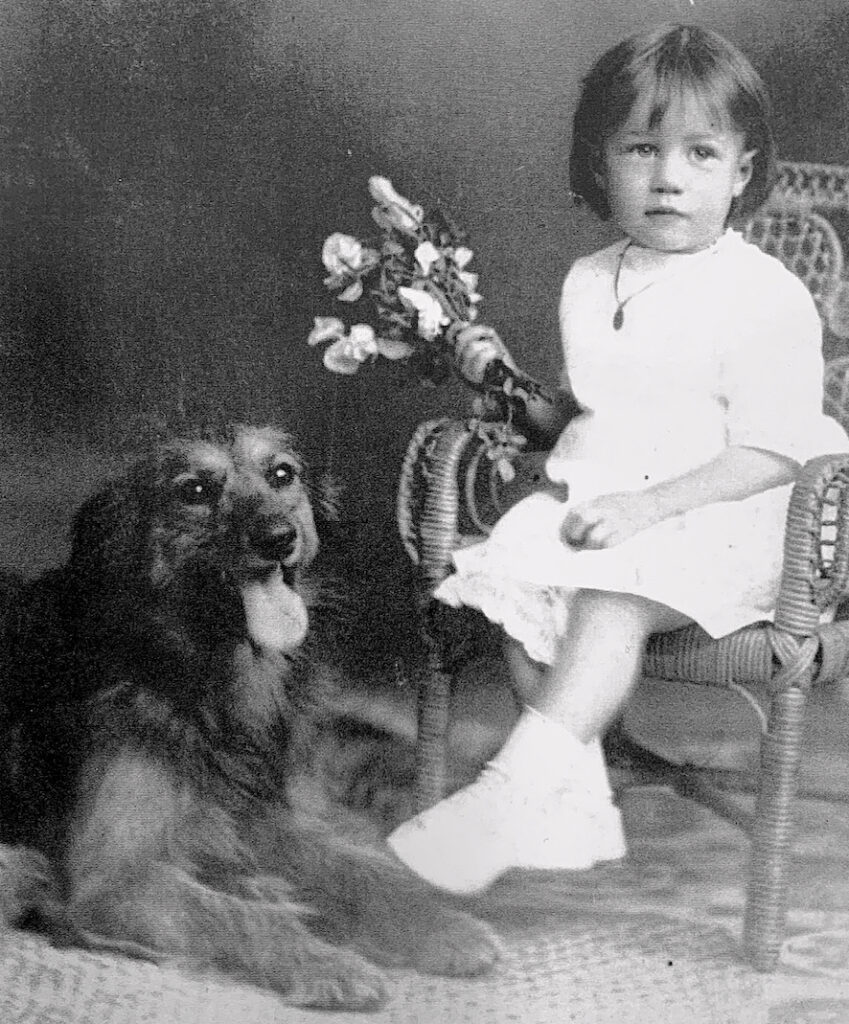
I have been looking for you. Where have you been photograph? I have been lying face down with other old photographs, inside an envelope. The Rimu chest of drawers keeps me warm and safe, and in the dark. Dot and Toto keep me company, and the flowers too, even though they don’t seem to smell anymore. My light sensitive paper body occasionally gets covered with fingerprint smudges as I get pulled out of the envelope, and flipped and handled.
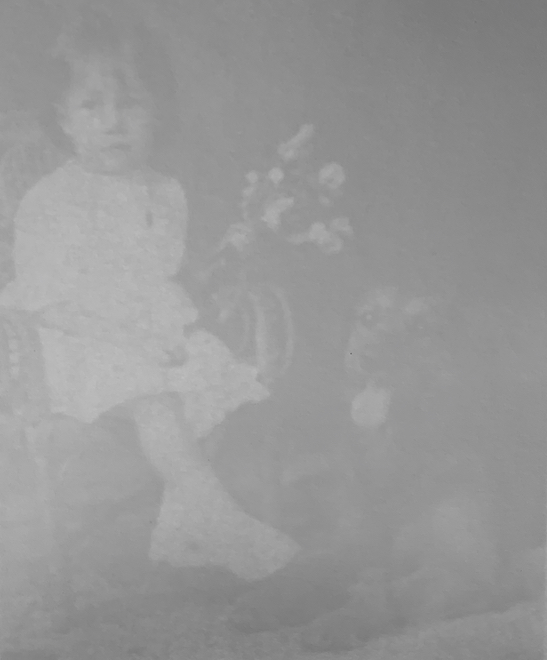
Yet, you are so special to me! I have bought you outside to see the natural light. What do you think? I like to see the light, but my chemical makeup may fade, as I was created by Samuel Carnell, a Hawkes Bay photographer working last century. He photographed Dot at 3 years old in 1910. Mr Carnell also photographed Dot’s Grandmother and baby cousin, and her Great Grandfather’s portrait in the 1870s.
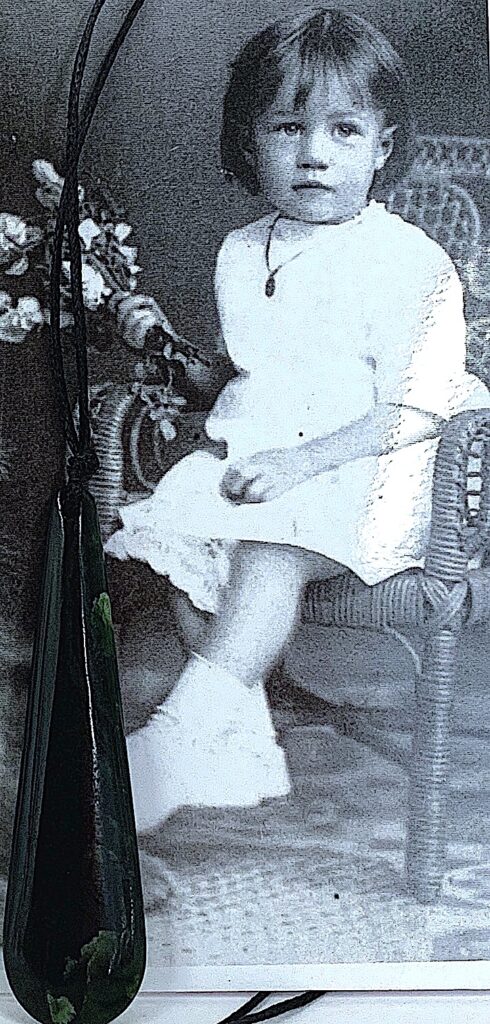
I am Dot’s granddaughter, and (here above) is a digital camera photograph, a gift from me to you… to keep you company. I have added another precious taonga, a pounamu treasure from my mother, Dot’s eldest daughter. This photograph, dated 2021, will keep you, and your ghost reflection photograph company. Thank you, I am glad that someone cares for us. Please don’t forget to put us back, so we do not fade and disappear, after you have viewed us.
UNCOVERING A VALUED OBJECT AND ITS IDENTITY.
Interview a Taonga: ‘A Late Nineteenth Century Fitted Bodice Jacket.‘ (Circa approximately 1896)
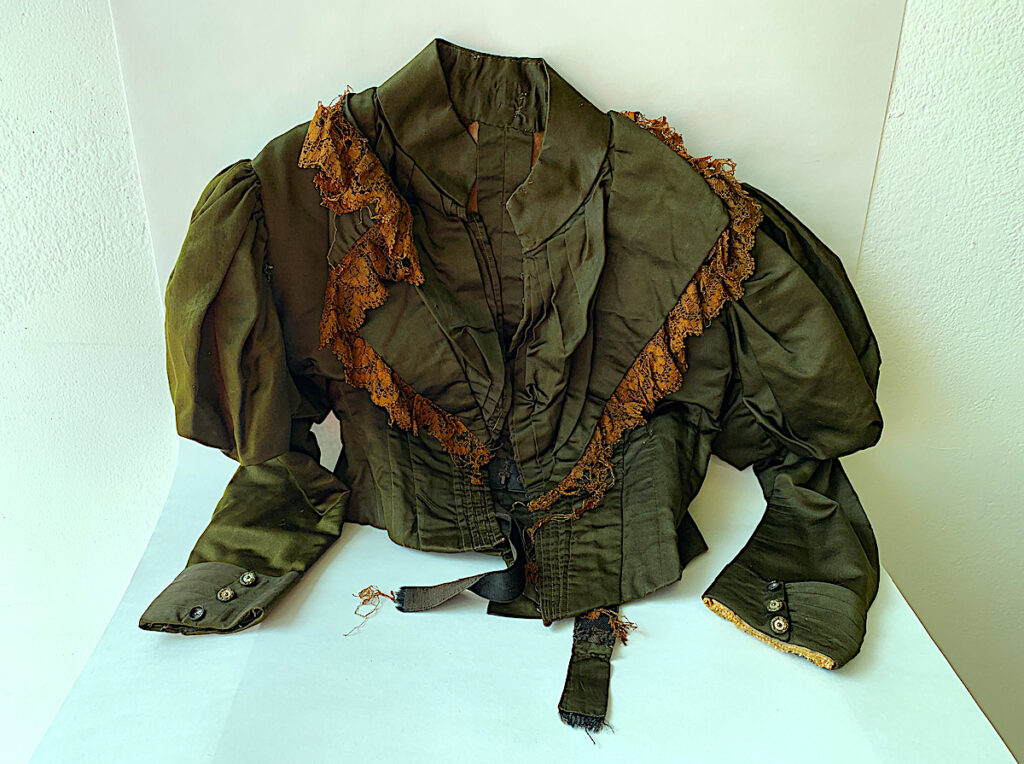
What are you made of? Satin, lace, cotton, braid, leather, fasteners, clips, buttons, (and repaired patches of braid and cotton fabric).
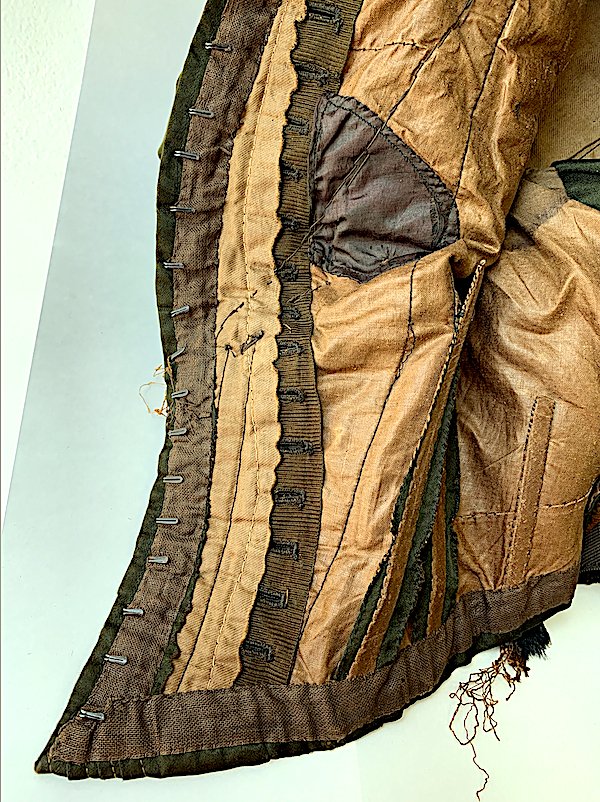
Where, and when were you made? London, England, and approximately 1896.
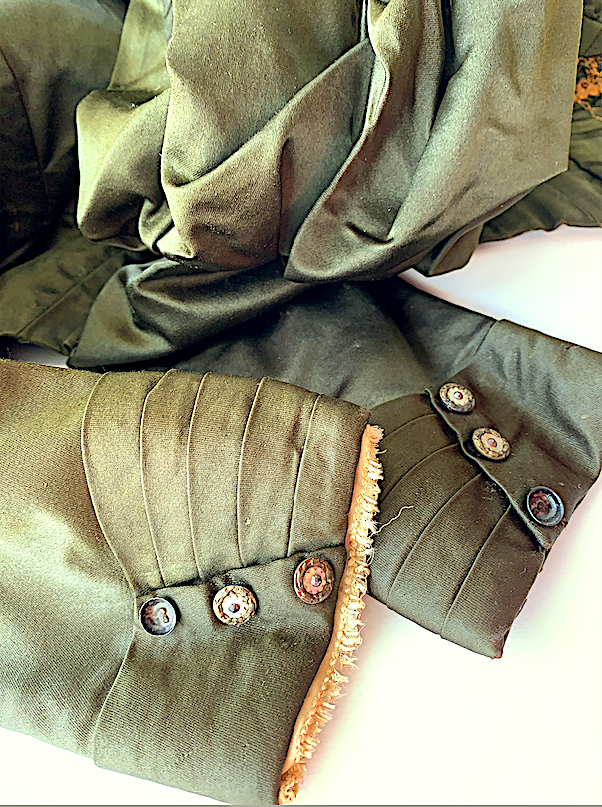
How were you made? A seamstress woman followed a pattern, stretched out my khaki satin fabric and hand-stitched me together. I have an inner layer and an outer layer, with whale bones, and many elaborate details of lace, a back neck bow, puffed layered sleeves, plus buttons and clips.
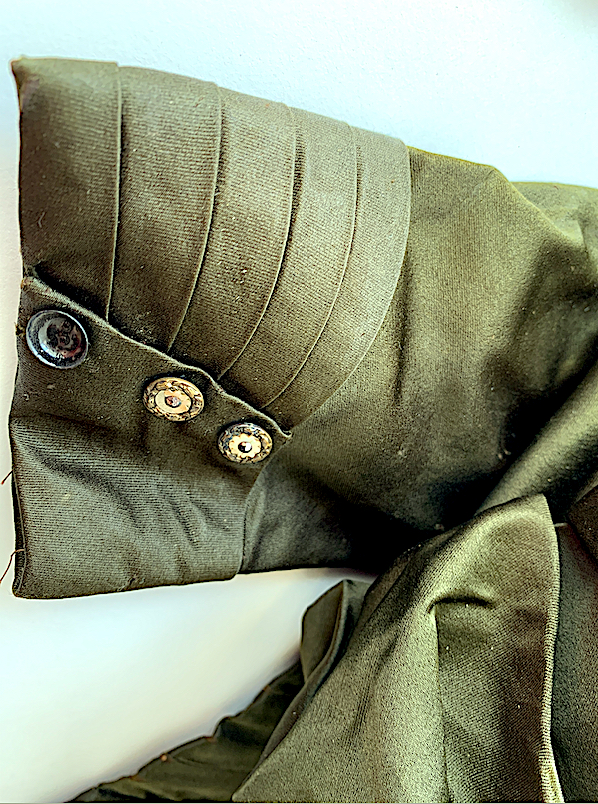
Are you heavy to wear or light? I am light to pick up, but have hard, heavier bones that protrude and poke into my owner’s waist and rib cage.
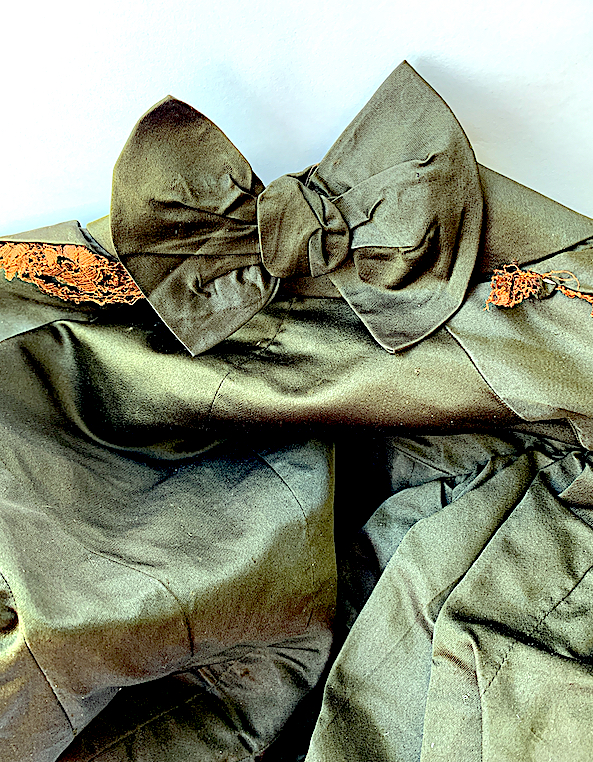
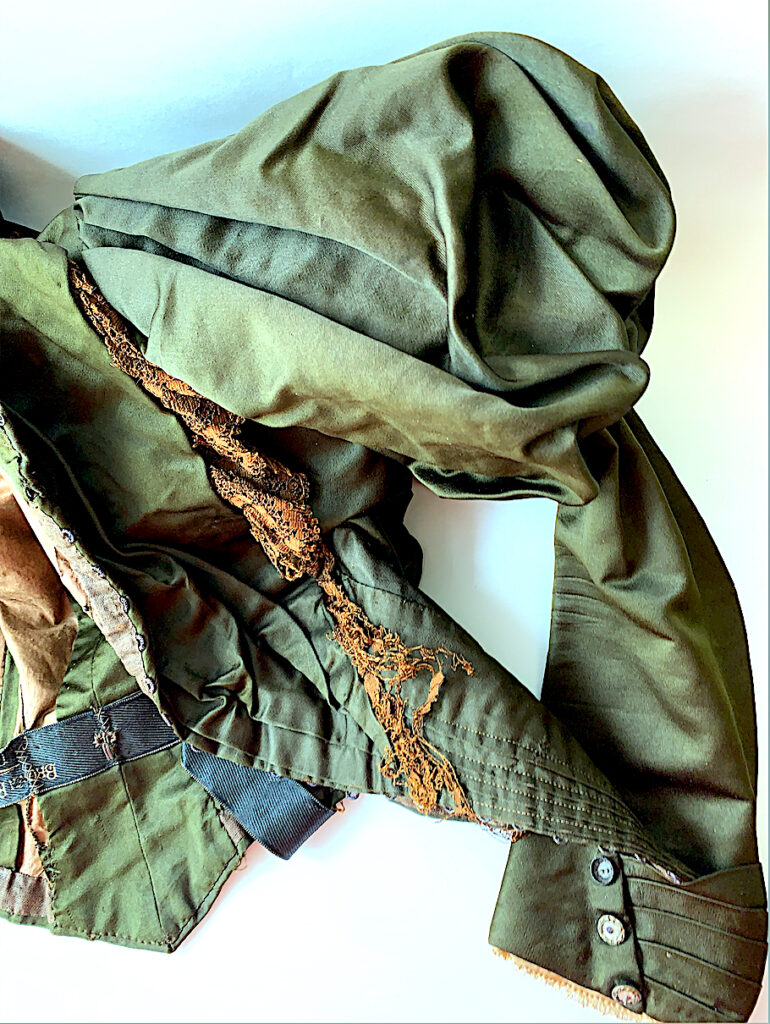
Who owned you? A middle class lady named Emily E owned me. Her mother died when she was born. She left her Father, Stepmother and Stepsisters to voyage alone on a ship from England to New Zealand. I was her pride possession, her most valuable piece of clothing within her wooden chest of belongings.
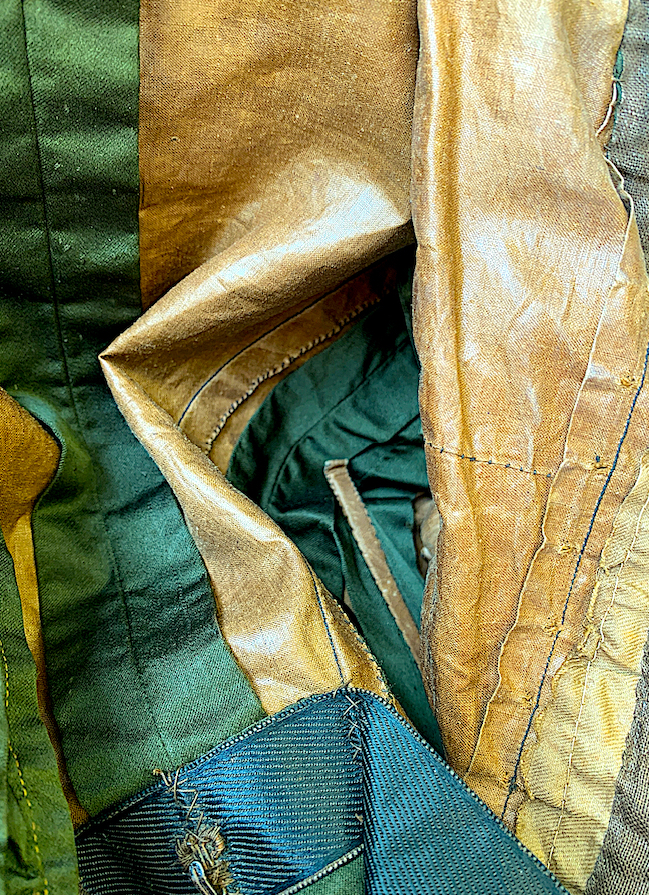
Were you worn on special occasions? I usually stayed folded in my salty-sea smelling box. I was shifted by horse and wagon around the North Island from Auckland to Taupo, and to Hawke’s Bay. Emily did not often wear me, because she was either working seven days a week as a housemaid or nanny in big houses, or she was searching for work.
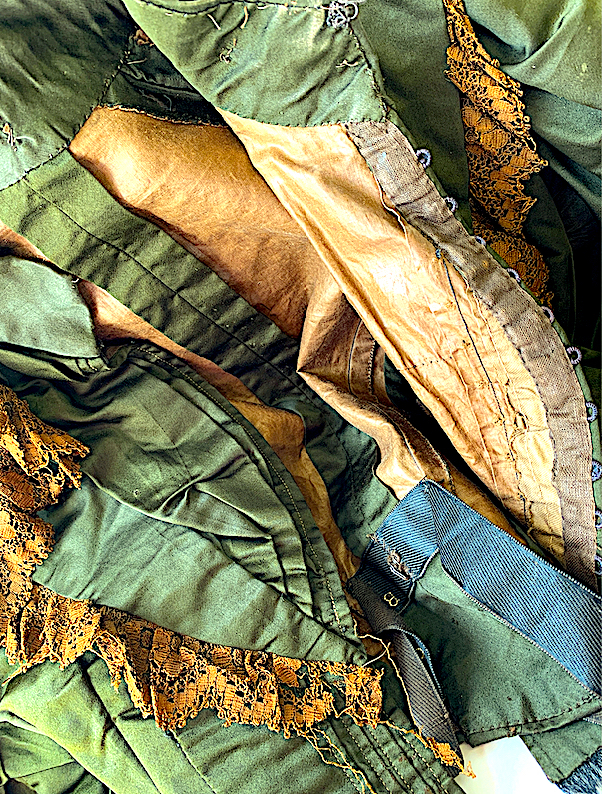
I do remember a time when she was excited to dress for an occasion. She wore me whilst visiting the township of Napier, and I could smell, and see the sea again.
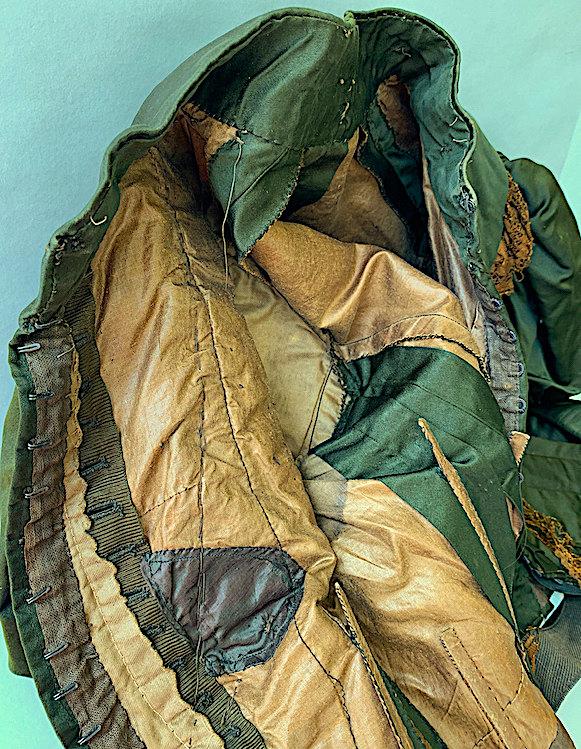
Once, I was beautiful, and at the height of fashion. My colouring shone like the New Zealand bush with strong green and brown tones, but now I am faded, patched and ripped, and over a century old! I need someone to repair me, look after me, and take me out occasionally, so I can breathe for another 125 years.
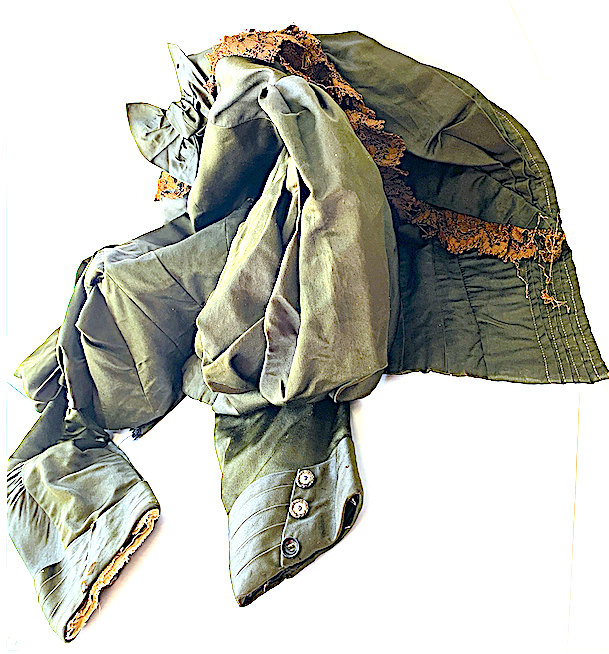
UNCOVERING A VALUED OBJECT AND ITS IDENTITY.
Interview a Taonga: A Childhood Wooden Toy – ‘RUSSIAN DOLLS’.
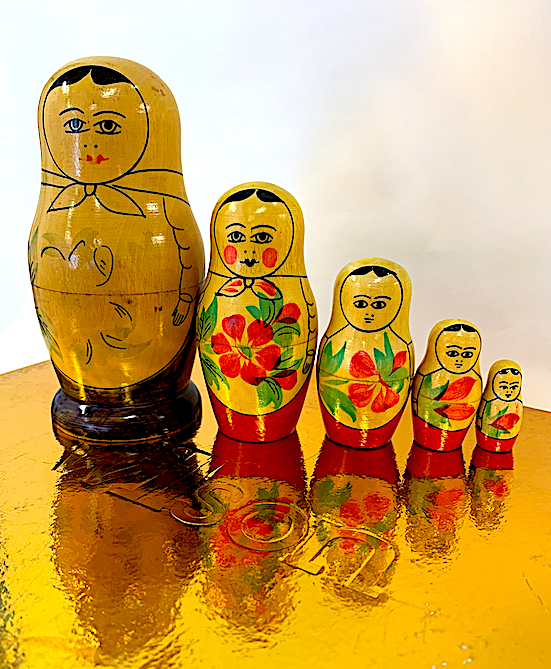
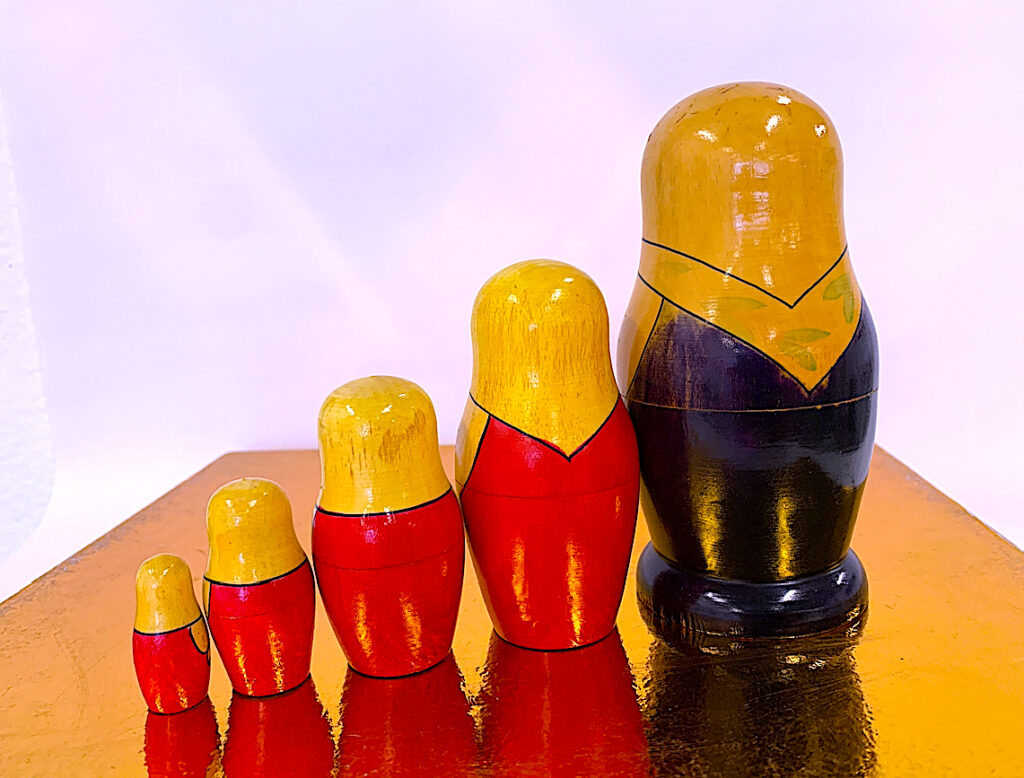
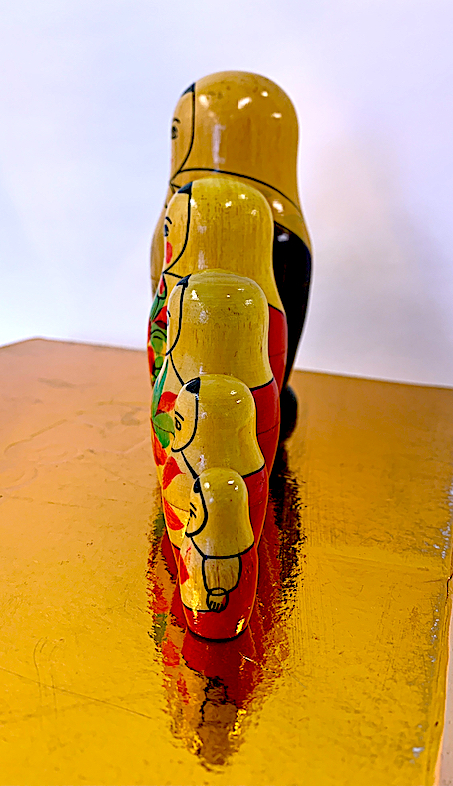
What are you? People today say I am an old fashioned toy, one that is painted and crafted by an artist out of wood. I am a set of different sized dolls, ranging from big to small.
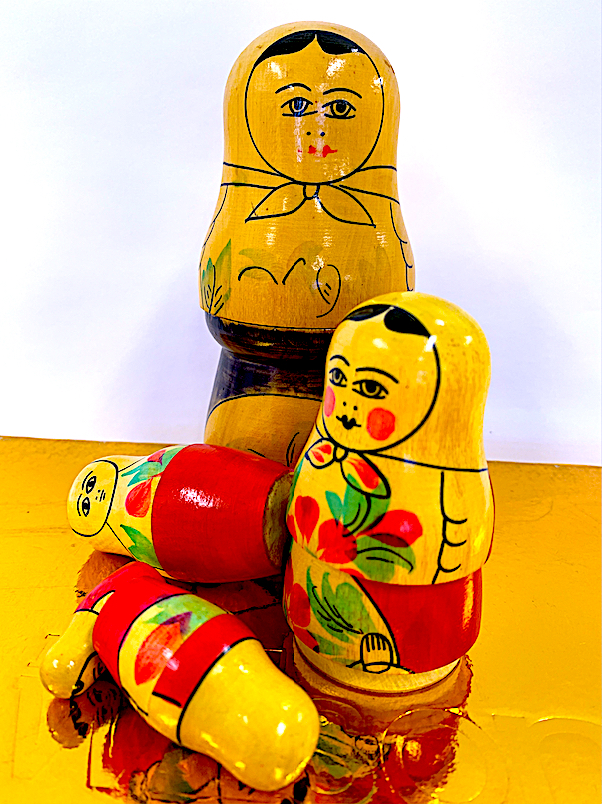
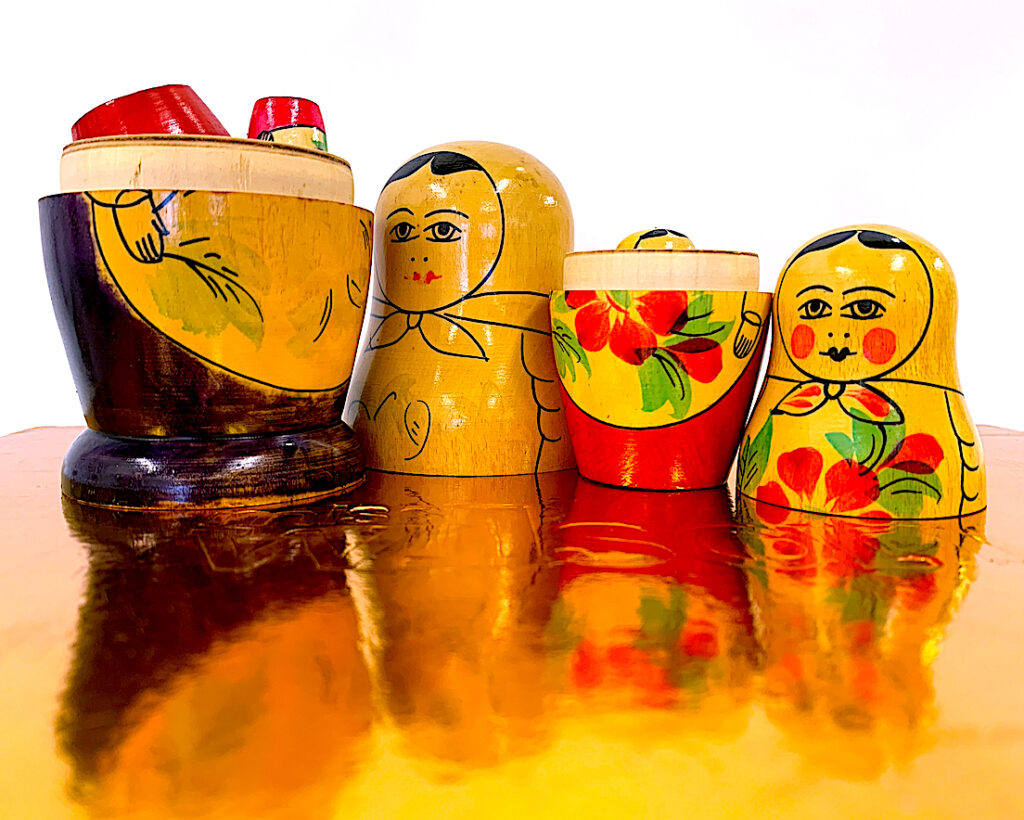
How old are you? I have even heard that there are people making replicas, but I am an original set of Russian Dolls, and am at least half a century old.
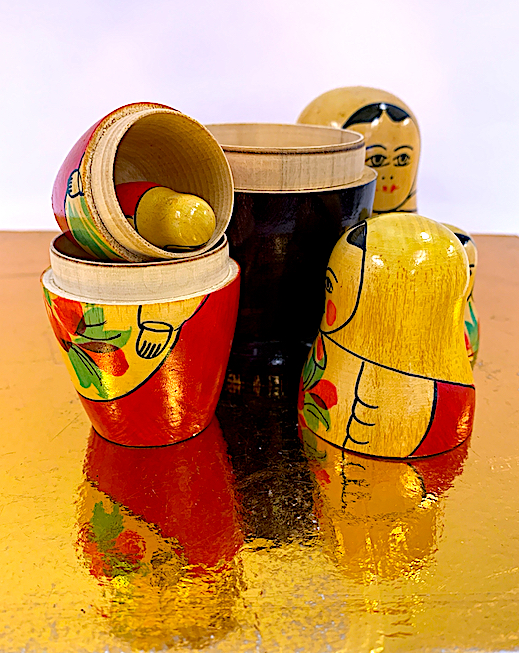
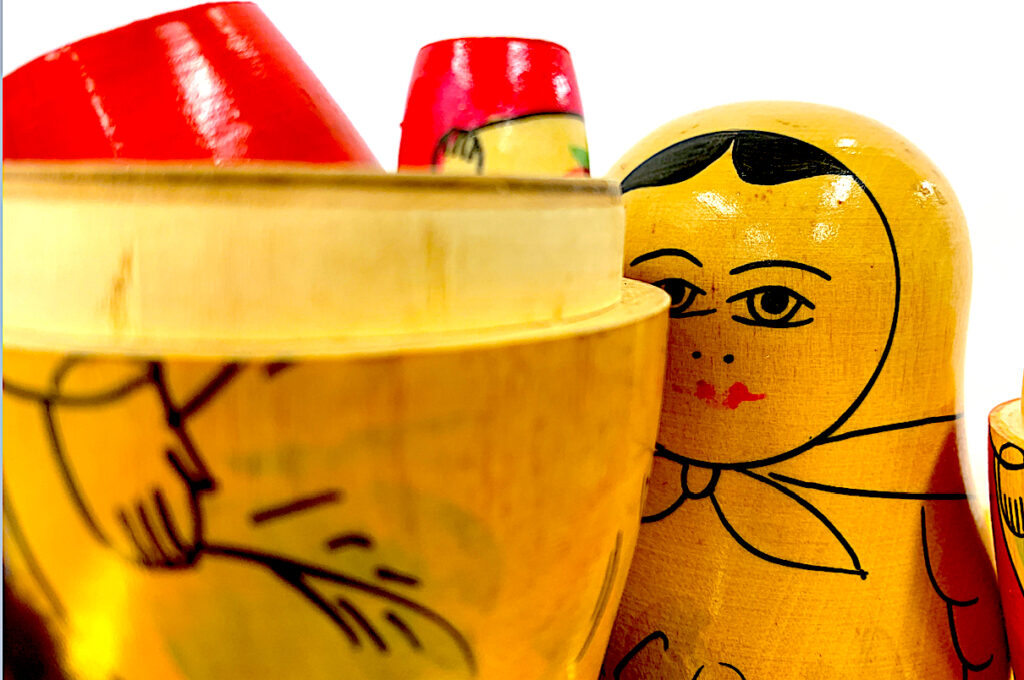
Where do you come from? Originally I came from Russia (U.S.S.R) in Europe. I was wrapped up, and given as a present to a small girl for her fifth birthday on the other side of the world in New Zealand.
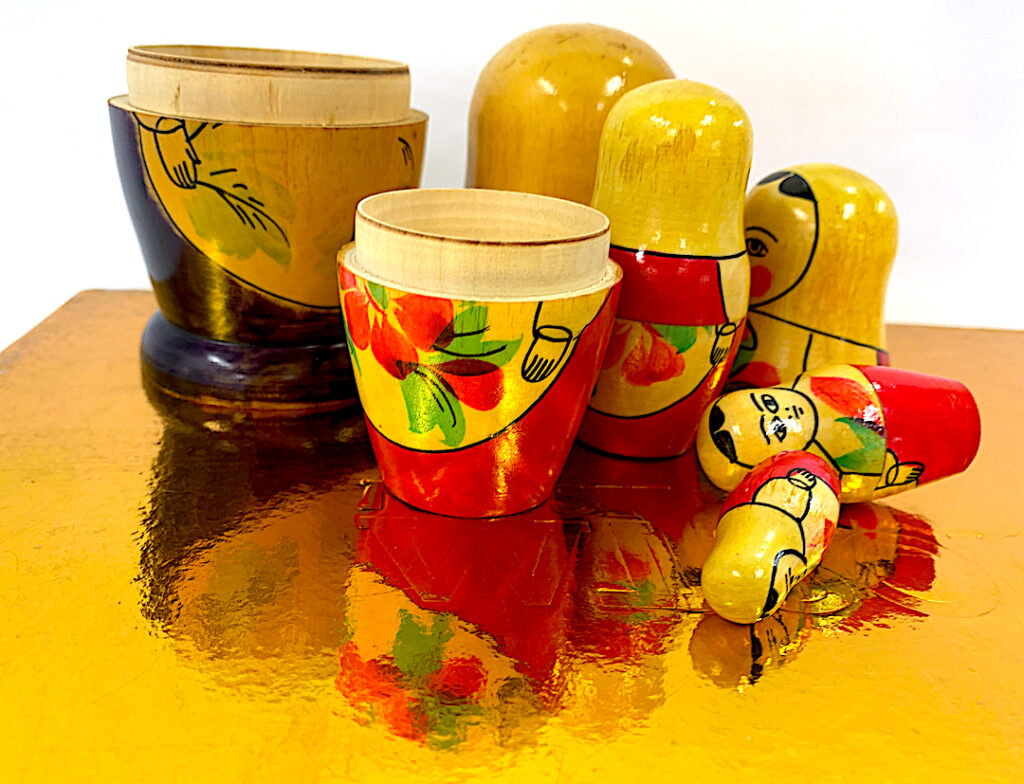
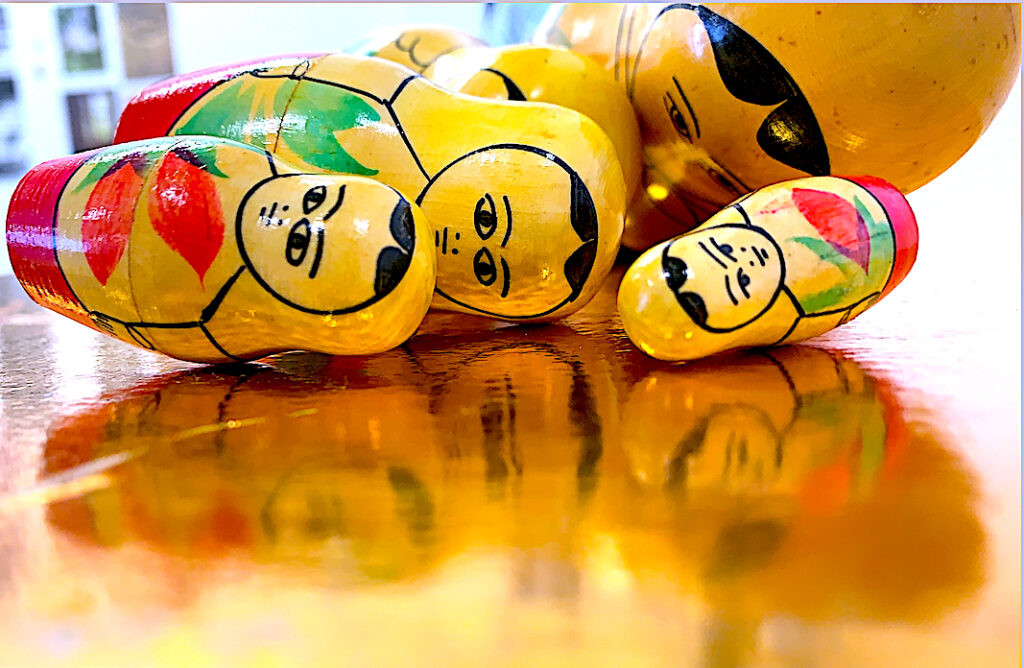
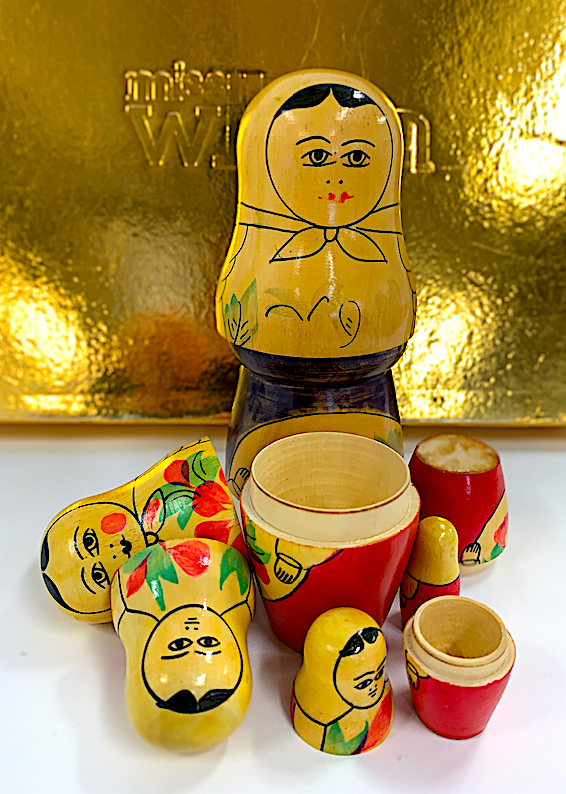
What is your purpose? The purpose of me was to be a tactile toy, I was to be both engaging, and enjoyable for children to simply play and manipulate with their hands. Another one of my purposes was for the player to learn about mathematical size and scale, and number counting and algebraic patterning sequences. If one used their imagination, the player could invent endless possibilities to mix and match me, and arrange and order my set of dolls together. Therefore, I am an educational toy, because children in the olden days (before computerised games and plastic toys), needed to either create their own fun, and invent games with natural materials such as sticks, or play with wooden toys.
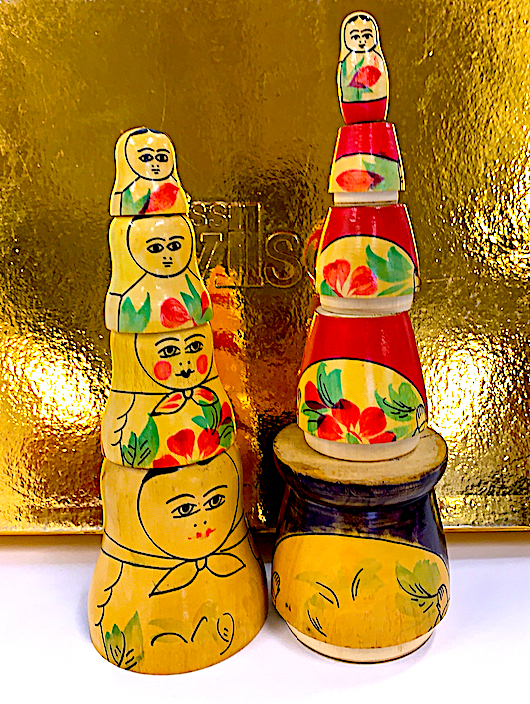
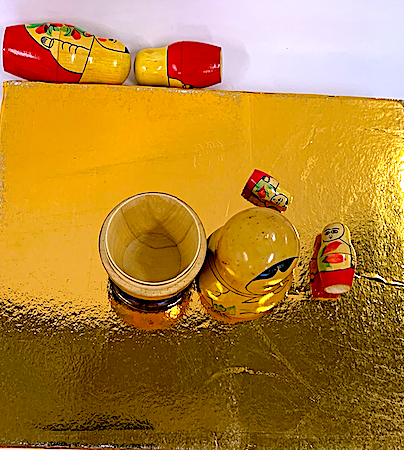
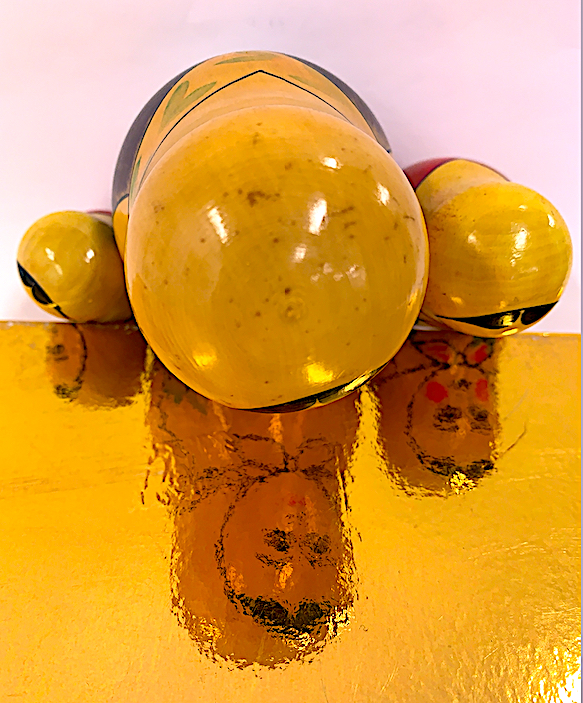
Nostalgia: What are you worth? Are you valuable? I had a little girl owner who valued and cared for me, and she spent many happy hours playing with me. She gained new skills by opening and closing each of my dolls, and revealing, and uncovering me. My owner swapped my dolls around, lined them up, placed them in a different body, made piles and layered my dolls on top of each other, and then neatly put me away. As she was playing, she learnt puzzle skills, how to concentrate, coordinate and explore, and she learnt to care for an object, such as me. I think I am valuable because I am a learning tool, and I am still as playable today, as I was then.
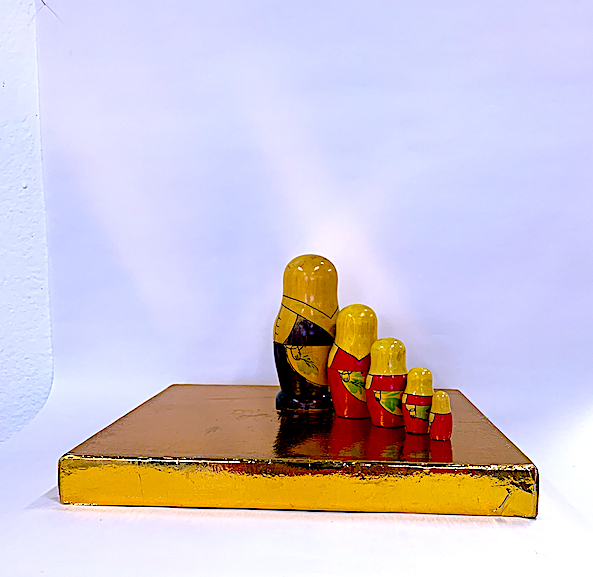
UNCOVERING A VALUED OBJECT AND ITS IDENTITY.
Interview a TAONGA – ‘A 100% SILK MINI SKIRT’
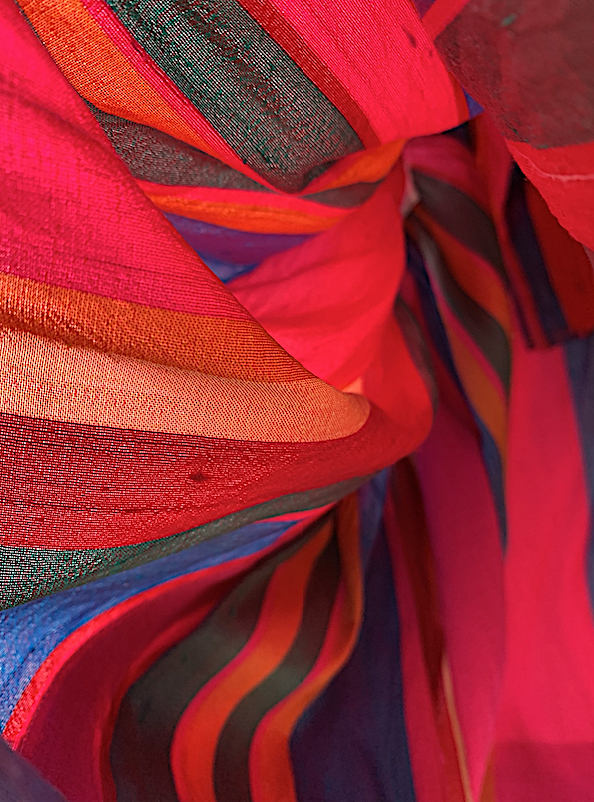
How long have you been living in that golden box my colourful skirt? I was originally hanging in a wardrobe back in the 80s and 90s, but fashions come and go, and change. So now, I do not get to see the sun, wind or rain, or go to a dance. I am wrapped like a present, the tissue paper encases my folds, and creases my colours.
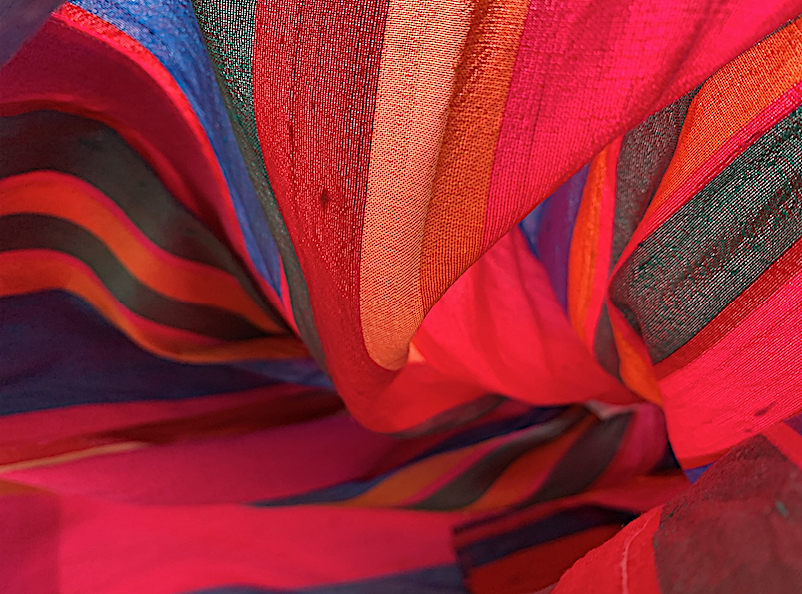
What are you made of? I am made of 100 percent pure silk. My owner had to be careful not to spill anything on my precious threads. Visiting the drycleaners was the only option to get washed and cleaned.
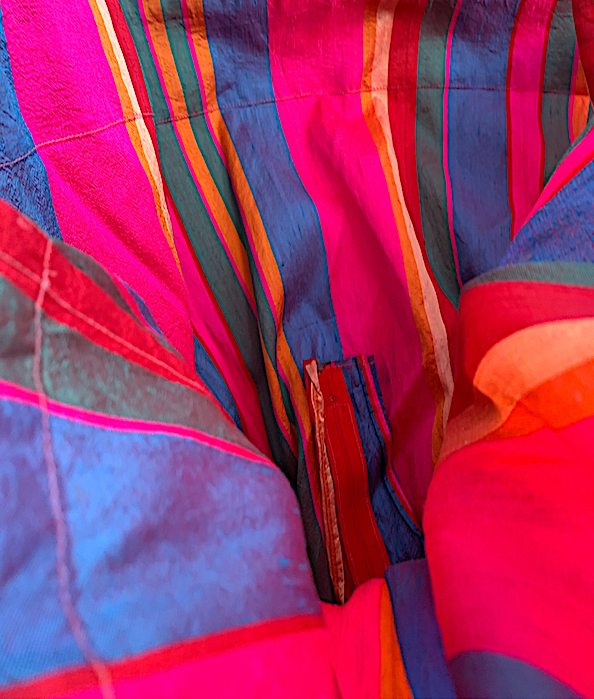
Do you remember when you were young and new? Yes, I was hanging in a designer shop, after my silkworm thread was dyed a myriad of colours, and woven into fabric, then cut and sewn. Fortunately, a mid-teen fell in love with me. I shone like a bright-coloured coral flower, lightly twirling like a topsy-turvy-top against black stockings, high heels, and a black shoulder-less top at her first dance.
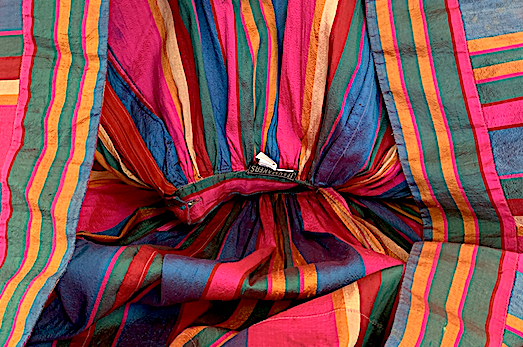
You are very colourful. Have you faded over the years? Yes, sunlight destroys my material. I need to be kept in a dark wardrobe. If you turn me inside out, I am very bright and vibrant underneath.
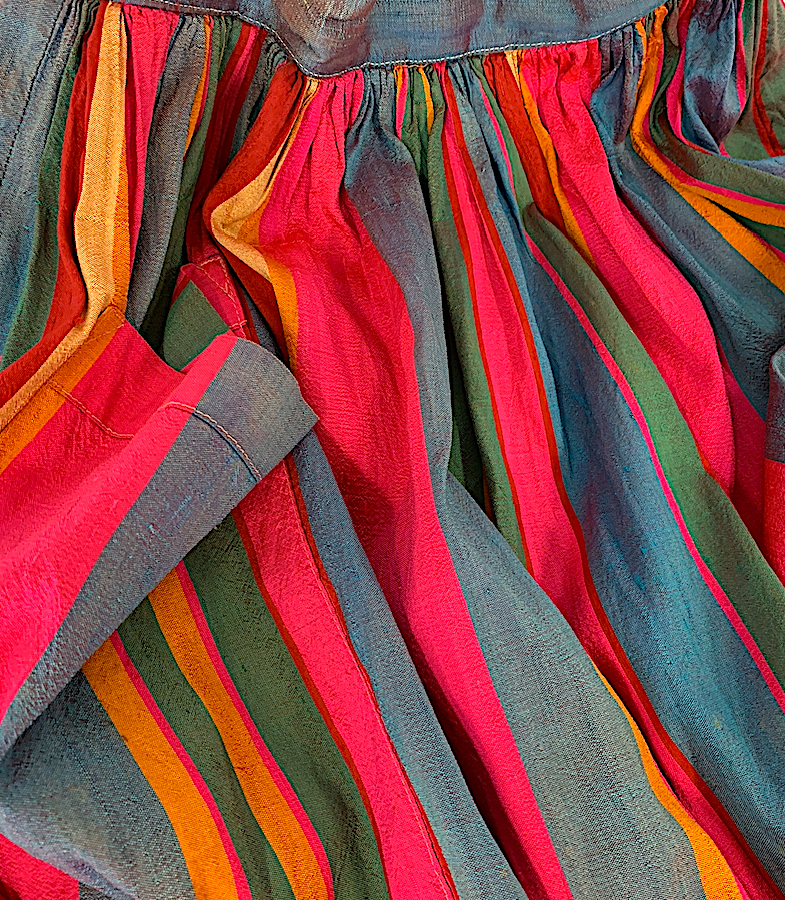
Do you wish to go out again? Yes, but my owner says she cannot fit my waist anymore. Perhaps she should pass me on, remodel or remake me into another fashionable statement, so I can once again breathe life into my silky striking stripes.
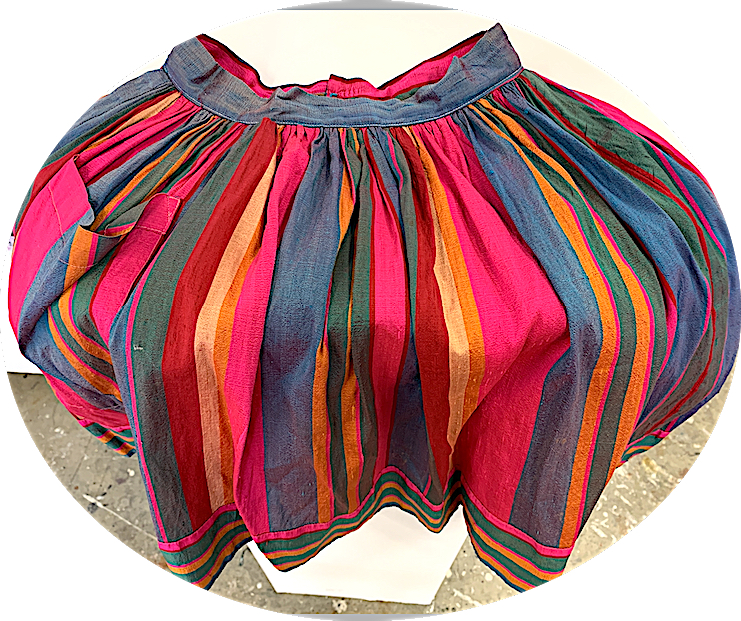
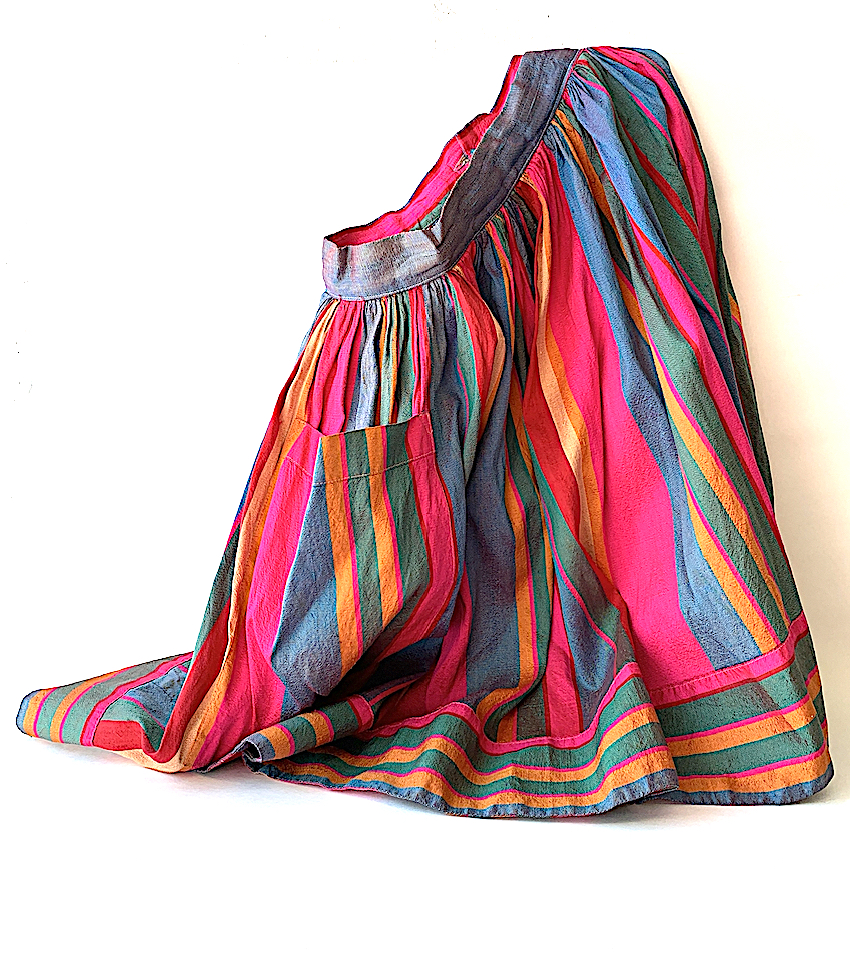
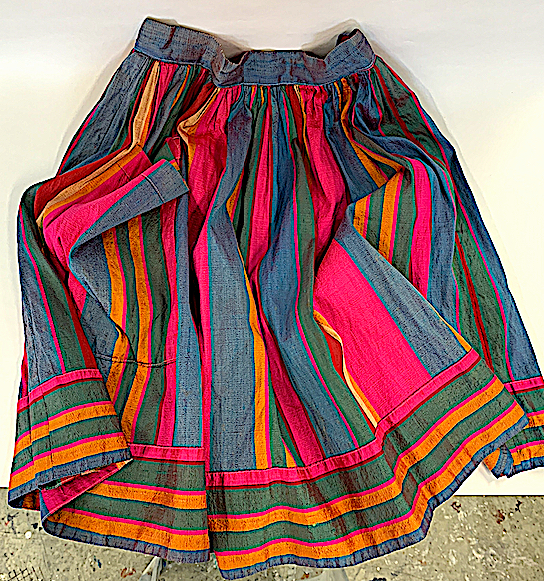
UNCOVERING A VALUED OBJECT AND ITS IDENTITY.
Interview a TAONGA – ‘SUNLIT MURRINE & CANE GLASS ART (3 Vases)’
What are you? Murrine Blown Glass formed into vessel shapes.
Are you young or old? We are 6 years young.
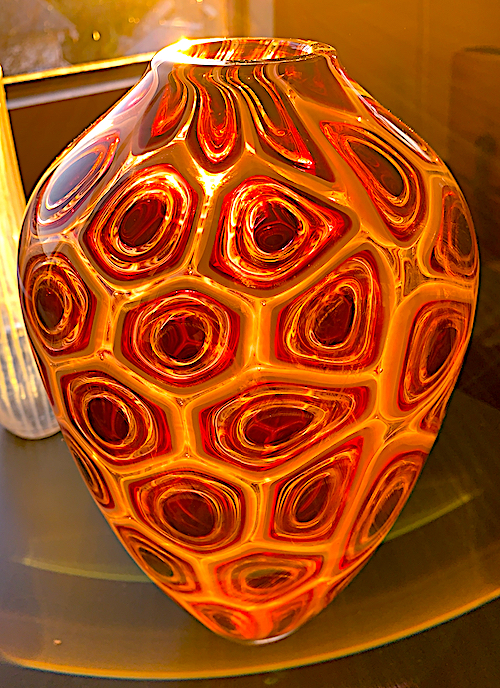
What are you made of? Clear and coloured glass, originally shaped in oblong rods/canes. Murrine are the patterns, designs or images made from inside a glass cane. When the cane rod is cut into cross-sections, the patterns are uncovered and revealed.
How were you made? A Murrine-style glass-blower named Michael Waysmith created us. He manipulated our cold, hard glass bodies by heating us in a hot furnace to make us sing and dance as hot liquid. Then, we finally become hard and cool again, but in a different shape and form. The intricate tessellations of our compositions bend, distort and reflect light.
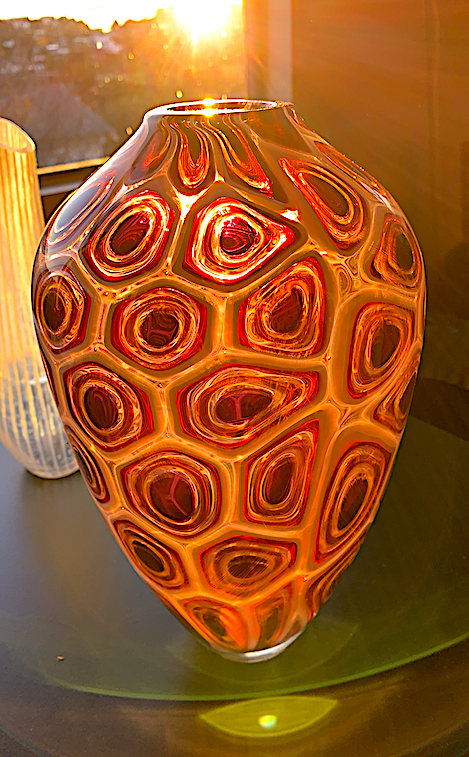
Do you like your new home? We did not like been peered at in the gallery, but, now we have been given a new home. We sometimes get dusty, and need to remind our owner to clean, and polish our vase forms. My owner’s pet dog when happy, swings his tail, therefore, we have a special place away from him, and up high on a table. Like lighthouses, we gleam and beam, receiving views of the sea, sunlight and moonlight.
What do you feel like? Our bodies are smooth to touch and hard, but our cold exteriors feel warm if the hot afternoon sun beams through the window. Numerous comments from visitors as they touch us, state how our glossy, glassy surfaces reflect and glow, and our rose pink and purply colours and shape patterns are attractive.
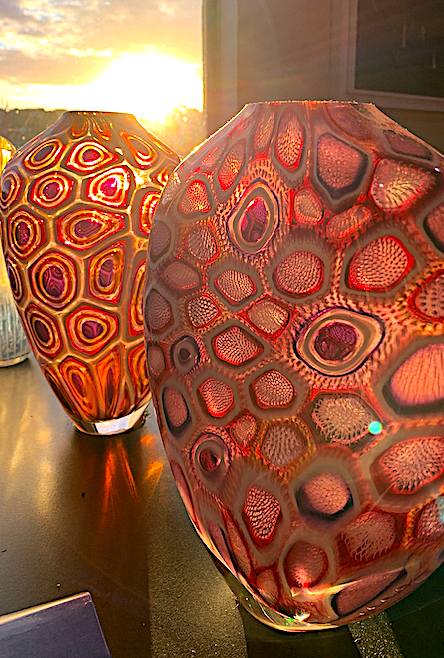
UNCOVERING A VALUED OBJECT AND ITS IDENTITY.
Interview a Taonga: ‘A Kiwi’
What are you? I am an animal. My Order is: Apterygiformes, my Family is: Apterygidae, my Genus is: Apteryx. I am an albino Kiwi bird, and a member of the Ratite Family (Ostriches, Emu, Cassowaries, and Rheas). I am an educational tool, because I have visited school classrooms for students to see my species: a Little Spotted Kiwi.
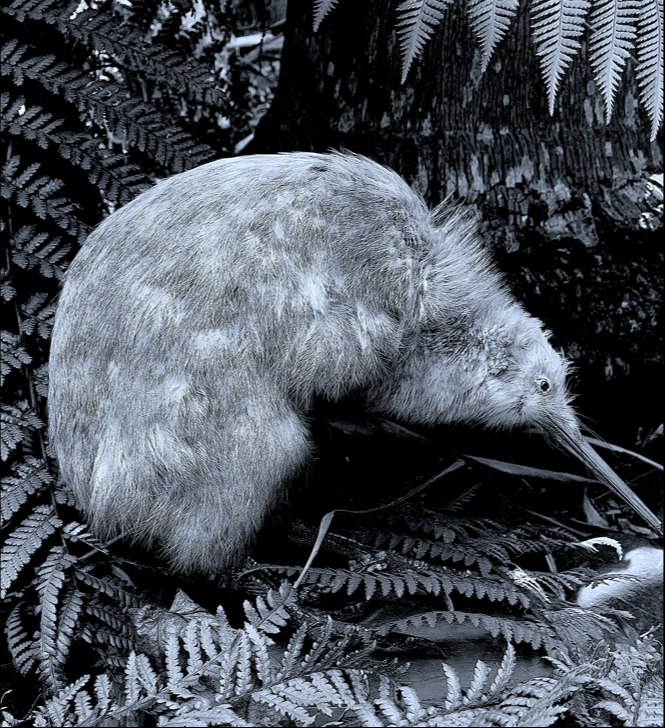
How old are you? I was about 2 years old when I died. Now, I have a second chance at life as a taxidermied animal, and I have been like this for 25 years.
What are you made of? I am just like a live Kiwi with external features such as: feathers, whiskers, skin, legs, feet, toes and claws. Yet, my interior parts such as my organs and blood have been removed. Now, I have a new inner body under my skin. My eyes look real, but they are actually beads.
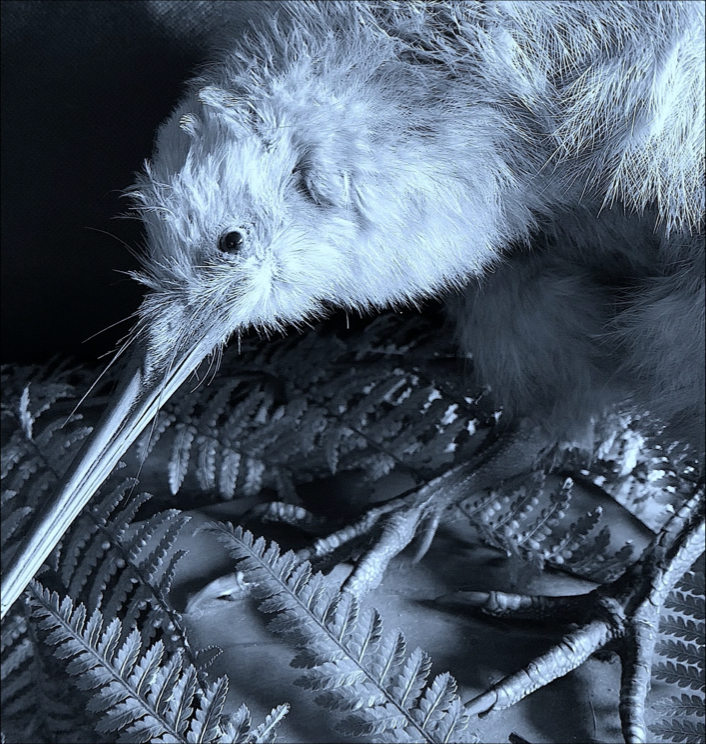
How were you made? A Taxidermist created me, to bring me back to life as a stuffed animal. I have been mounted on a rimu plaque. Some would say I am like a mounted deer’s head, however, I was not shot, but died from a stoat bite in the Coromandel forest.
What do you feel like? My outer hairlike feathers are slightly rough and textured, but my undercoat is soft and smooth. My short legs are strong and rough. Did you know that a kiwi’s nose nostrils sit at the end of the beak? Sadly, I can no longer use my nostrils to smell.
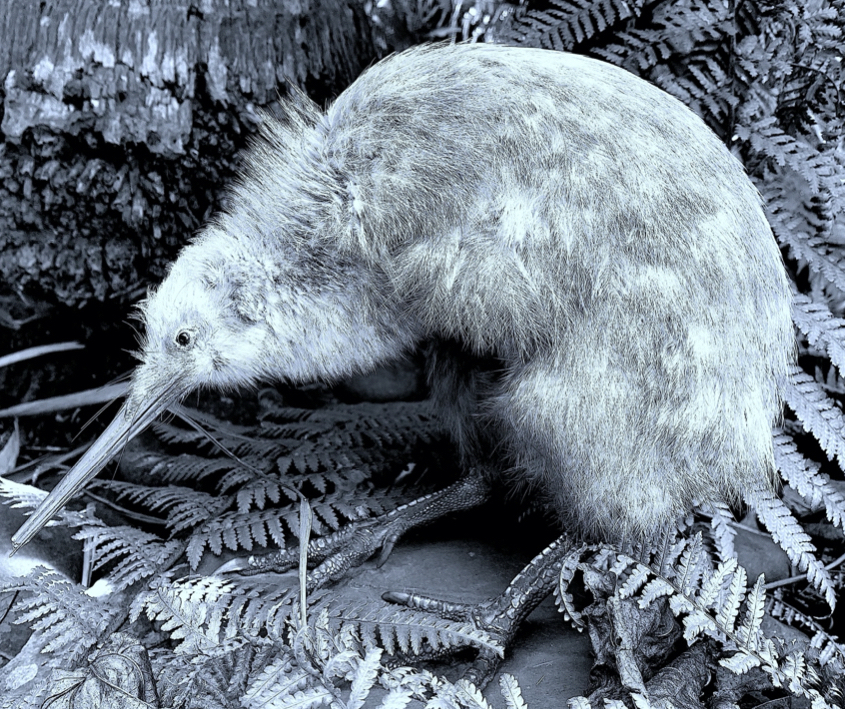
Do you like your new home? I like my new home. My owner’s pet dog would devour me if he had a chance, so I am kept safe up high. I do not smell, so he does not try to catch me. I sometimes hear the morepork calling at night, and wish I could revisit the bush. But, I would not survive, and I am safe here. My owner lets me explore her garden, so I am very happy. There are 5 species of Kiwi, and we are all critically endangered. Please be aware and help save the KIWI!

